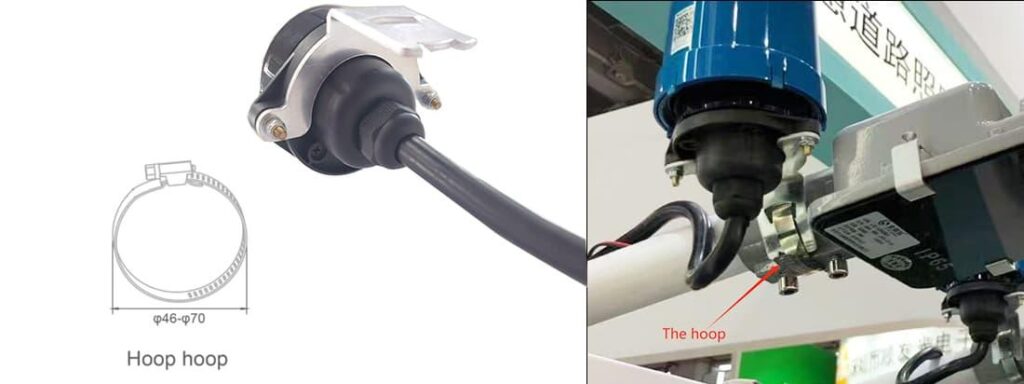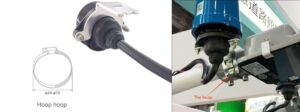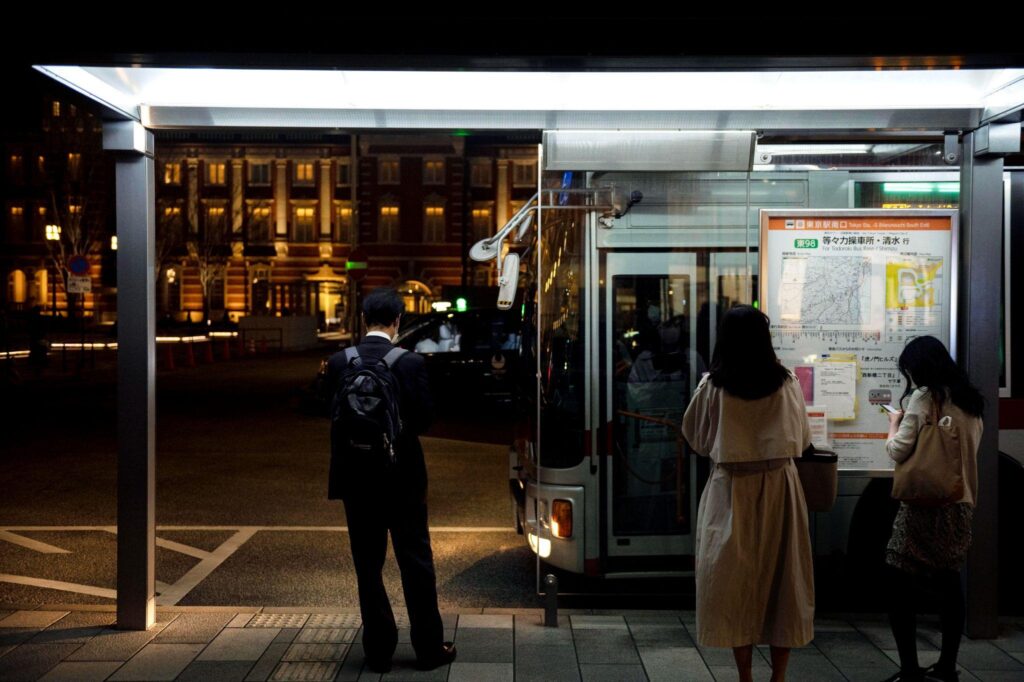مخطط تفصيلي
- مقدمة
- لماذا يفعل Photocell For Street Light’s Orientation Matter in Outdoor Lighting Control?
- What Makes the JL-260C Rotatable التحكم الضوئي Socket a Breakthrough?
- Where Do Rotatable Sockets Like JL-260C Make the Biggest Difference?
- What Other Long-Join Rotatable وعاء التحكم الضوئي Models Are Available?
- How Do Rotatable Sockets Contribute to Smart Street Lighting Efficiency?
- Why Is Rotation Synonymous with Precision, Efficiency, and Longevity?
- الكلمات النهائية
Lighting is becoming intelligent and changing the way cities manage energy and efficiency. But did you know that something as small as photocell orientation can decide whether a system saves power or wastes it?
تقليدي أجهزة استشعار الخلايا الضوئية من الغسق إلى الفجر must face north for accuracy, but luminaires don’t always cooperate. This is where rotatable photocontrol receptacles like the JL-260C come in.
They solve alignment challenges, speed up installation, and prepare poles for future smart modules—all in one simple design.

لماذا يفعل Photocell For Street Light’s Orientation Matter in Outdoor Lighting Control?
When a مستشعر ضوئي is misaligned, it can trigger false ON/OFF behavior. The sensor may see dusk when it’s still light, or see light and switch the lamp off too soon—even while it’s dark in shadows.
Such errors lead to energy waste. Lights run when they shouldn’t. Or they stay off when they should be on. Over time, this cycling also shortens LED lifespan by stressing drivers and relays.
Most أدوات التحكم في الإضاءة are designed to face true north (in the Northern Hemisphere) to capture ambient, diffuse light—not direct sun. Direct sunlight can saturate the sensor or age it prematurely.
But here lies the problem. Many luminaires are fixed in direction and cannot be rotated easily. You may have poles installed for aesthetics, not north. In such cases, aligning the خلية ضوئية لإضاءة الشوارع becomes a real challenge.
Ensuring the sensor faces the right way is essential to reliable and efficient outdoor lighting systems.
What Makes the JL-260C Rotatable التحكم الضوئي Socket a Breakthrough?
It ensures precise مستشعر الضوء Alignment
The JL-260C offers 360° rotation, allowing the نيما socket to be oriented independently from the luminaire body.
You can set the photocell’s sensor directly toward true north, ensuring it senses ambient light—not direct glare. A high-visibility north indicator on the socket helps installers quickly align the sensor correctly in the field.
Rotation Speed Up and Simplify Installations
With the socket rotatable, electricians can adjust orientation without repositioning the luminaire.
That means no mechanical rework or re-mounting just to face north.
In real installations—where poles or fixtures may already be misaligned—the JL-260C ensures consistent alignment across units. It reduces on-site labor, errors, and the need for rework after deployment. Here is a table of installation efficiency comparison.
| Socket Type | Fixed NEMA Socket | JL-260C Rotatable | Conventional 5-pin |
| Alignment Method | Manual luminaire repositioning | Independent socket rotation | Limited orientation |
| Average Adjustment Time | 3–5 minutes | <1 minute | 2–3 minutes |
| Typical Field Errors | High (misaligned sensors) | قليل | معتدل |
| Rework Frequency | متكرر | Rare | Occasional |
It Enhance Sensor Stability and Longevity
Correct orientation prevents false triggers during sunrise or sunset, when glare might otherwise trip the sensor.
This curbs switching faults, ultimately yielding reduced relay cycling and less mechanical stress. This, over time, improves the lifespan of the entire lighting system.
It Support Future-Proof Smart Lighting Compatibility
The JL-260C is compatible with the ANSI C136.41 7-pin standard. This enables signaling and control channels. It hosts modules like:
- لورا
- إنترنت الأشياء ضيق النطاق
- دالي
- زاغا-D4i
By rotating module orientation, you optimize signal direction and heat dispersion without compromising electrical integrity.
Technical Specifications — JL-260C
| المعلمة | قيمة | المعلمة | قيمة |
| نطاق الجهد المطبق | 0 – 480 VAC | التردد المقدر | 50 / 60 هرتز |
| Power Loading / Current | 15 A | التحكم في الإشارة | 0 – 30 VDC, 250 mA max |
| Lead Wire | 16 AWG (power) + 18 AWG (signal) | درجة الحرارة المحيطة | من -40 درجة مئوية إلى +70 درجة مئوية |
| Humidity / Related Humidity | 96% | Waterproof / Enclosure Rating | IP65/IP66 |
| Rotation / Orientation Feature | 360° rotatable | Certification / Standards | ANSI C136.41, م, بنفايات, يو ال, CB |
Where Do Rotatable Sockets Like JL-260C Make the Biggest Difference?

Rotatable sockets shine when fixture orientation is constrained or inconsistent. Here are key scenarios and how rotation helps:
| سيناريو | Role of Rotatable Socket |
| Urban road retrofits | Align photocells north, even when luminaires can’t rotate |
| Parks and landscape lighting | Adjust sensors independently of decorative pole angles |
| Smart lighting deployment zones | Ensure plug-and-play alignment for IoT modules |
| Decorative or angled fixtures | Avoid structural modification; just rotate the base |
What Other Long-Join Rotatable وعاء التحكم الضوئي Models Are Available?
Long-Join offers several variants beyond the JL-260C, each tailored for different needs but sharing the rotatable advantage. Below is a breakdown of three notable models:
- JL-260B
- JL-261R series
- JL-260R
JL-260B: Where Does the Compact 5-Pin Version Fit Best
The JL-260B is a 5-pin NEMA rotatable receptacle. It is smaller and more compact than the 7-pin versions. It’s ideal for basic control and dusk-to-dawn switching.
However, in installations where full ANSI C136.41 signaling is needed, this may not be a good option.
In such cases—LED streetlights, parks, or commercial zones—the JL-260B offers the key benefit of adjustable orientation without the footprint or cost of full 7-pin modules.
JL-261R Series: How Does 360° Rotation Benefit Smart Poles
The JL-261R series provides tool-free 360° rotation, letting installers twist the socket in any direction without disassembly.
This is especially useful when integrating advanced smart poles that host modules with directional antennas or require precise spatial alignment.
Its design accommodates higher load photocontrols, making it suitable for configurations that may demand more current or more complex signaling paths.
JL-260R: Why Choose Enhanced Locking for Harsh Conditions
The JL-260R emphasizes mechanical robustness. With enhanced locking mechanisms, it resists vibration, wind loads, and wear over time. It’s rated for 20 A, which means it can better handle inrush from heavy LED loads or auxiliary modules.
In environments with extreme weather or where reliability is critical, JL-260R ensures both the sensor alignment and electrical integrity stay secure.
How Do Rotatable Sockets Contribute to Smart Street Lighting Efficiency?
Rotatable sockets bring measurable gains to smart street lighting by enabling precision, flexibility, reliability, and standard compliance.

Precision orientation = reduced energy waste
When the photocell is correctly aligned, it only switches lights based on true ambient levels. Misalignment risks false triggers and unnecessary ON time.
Rotatable sockets let you orient the sensor exactly, so energy isn’t wasted due to glare or shadow anomalies.
Flexible integration into intelligent light poles
Smart poles often host multiple devices—communication modules, sensors, LEDs—with spatial constraints. A rotatable base allows the photocontrol to adapt its orientation without forcing module relocation or fixture redesign.
This flexibility simplifies pole integration in dense smart lighting ecosystems.
Reliable dusk-to-dawn sensor performance
Correct alignment guards against spurious switching at sunrise or sunset. It stabilizes sensor behavior across all seasonal sun angles, which reduces relay switching and avoids stray toggling even in edge-case lighting conditions.
Compliance with ANSI/UL standards
Modern smart lighting relies on recognized standards. The rotatable sockets (when designed properly) maintain ANSI C136.10 / C136.41 / UL compliance by preserving the socket’s physical, electrical, and safety requirements while adding mechanical adaptability.
This ensures compatibility and reliability across smart street lighting networks.
Why Is Rotation Synonymous with Precision, Efficiency, and Longevity?
Rotation in a photocontrol socket is far more than a mechanical convenience—it’s a strategic enabler of high-performance lighting systems.
Rotatable sockets are more than a mechanical convenience
They allow installers to “get the sensor right” without touching the expensive luminaire or structural mounting. In effect, you solve the orientation problem at the simplest interface—the socket itself.
Essential for smart city lighting networks
In city-scale deployments, small misalignments multiply. Rotatable sockets ensure consistency across lights, support modular upgrades (e.g., smart nodes, IoT devices), and reduce maintenance interventions from misconfigured sensors.
JL-260C ensures first-time-right installation
With independent rotation, a north marker, and full compatibility with ANSI C136.41, the JL-260C helps curb costly rework and ensures the system works properly from day one. You don’t chase errors later—you avoid them early.
الكلمات النهائية
A rotatable photocontrol socket is more than a detail—it ensures accuracy, stability, and efficiency in every streetlight. The JL-260C proves how orientation drives smarter, longer-lasting lighting systems. For reliable supply and trusted expertise, Chi-Swear offers JL-260C smart photocontrollers tailored for modern smart city needs.
الروابط الخارجية
- https://www.nema.org/
- https://www1.eere.energy.gov/buildings/publications/pdfs/ssl/msslc_dallas2012_kauffman_ansi.pdf
- https://lora-alliance.org/
- https://en.wikipedia.org/wiki/Narrowband_IoT
- https://www.dali-alliance.org/
- https://single-market-economy.ec.europa.eu/single-market/goods/ce-marking_en
- https://en.wikipedia.org/wiki/RoHS
- https://www.ul.com/solutions






